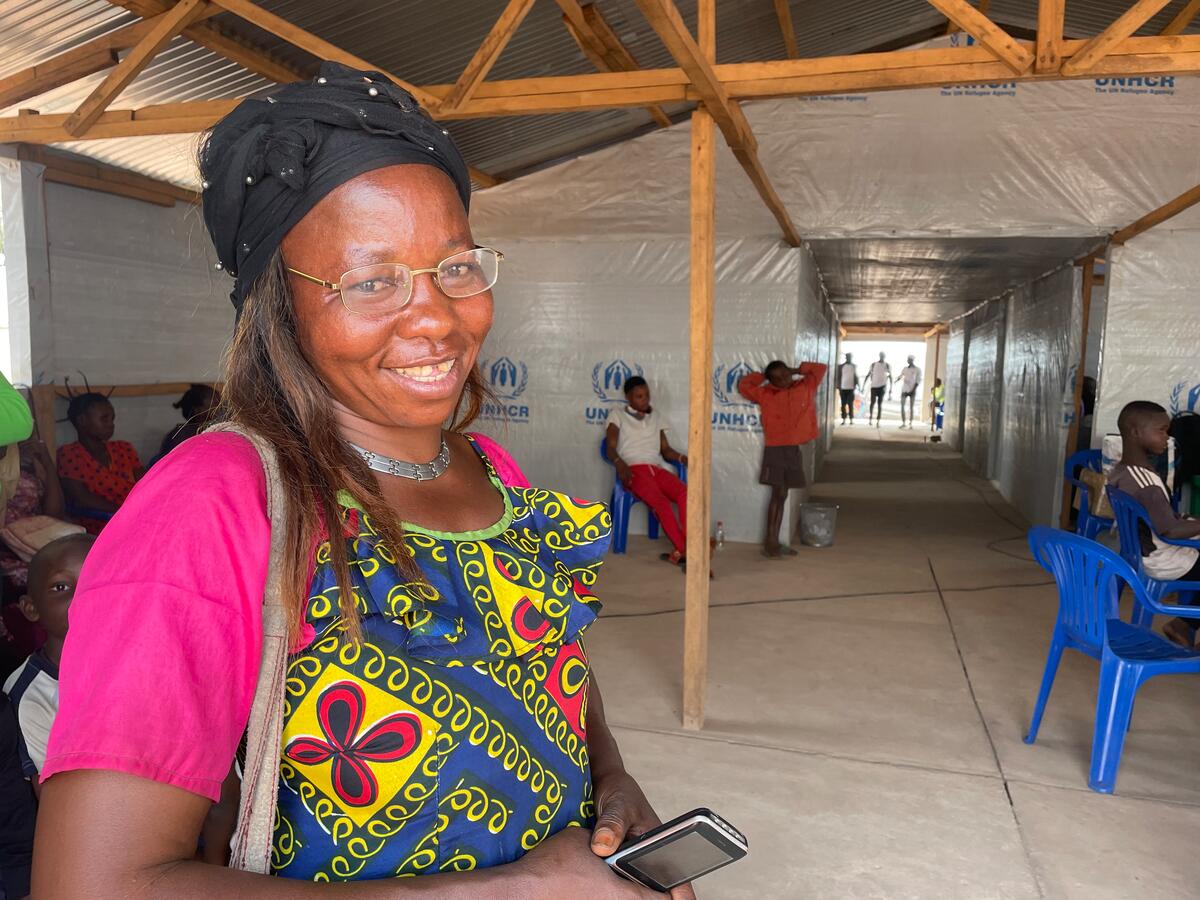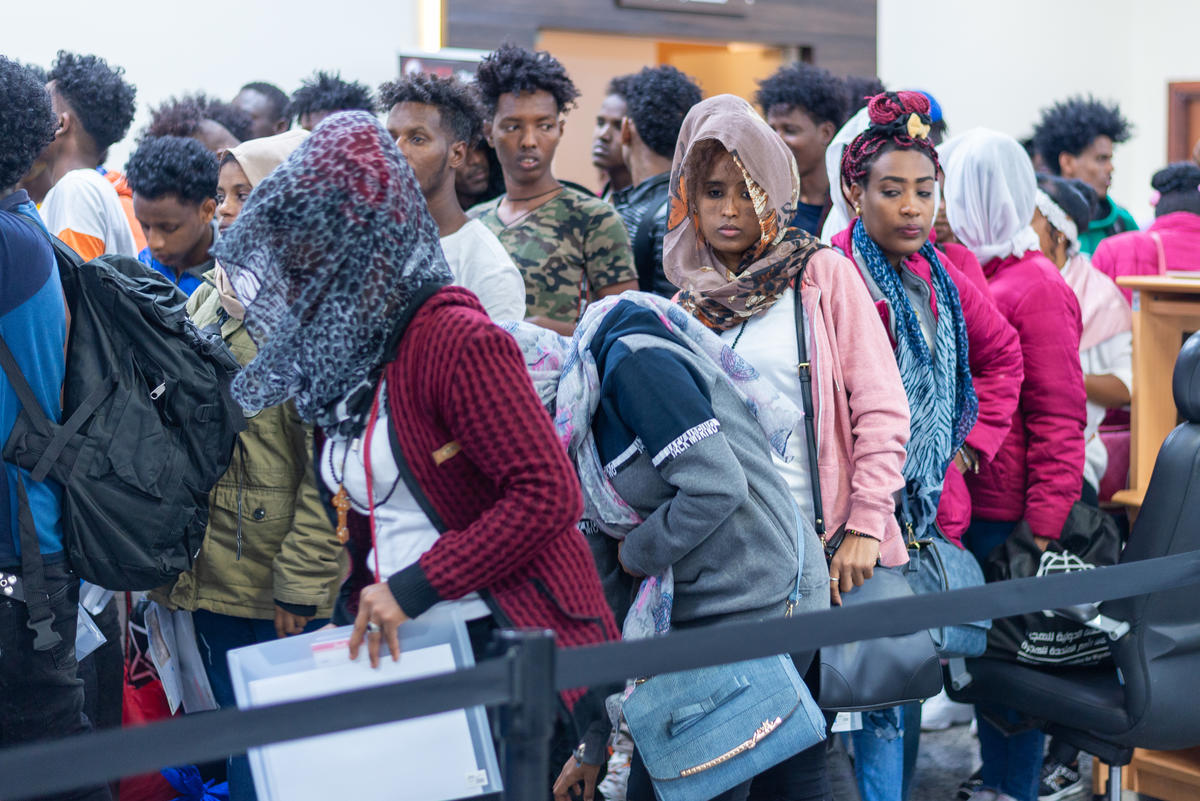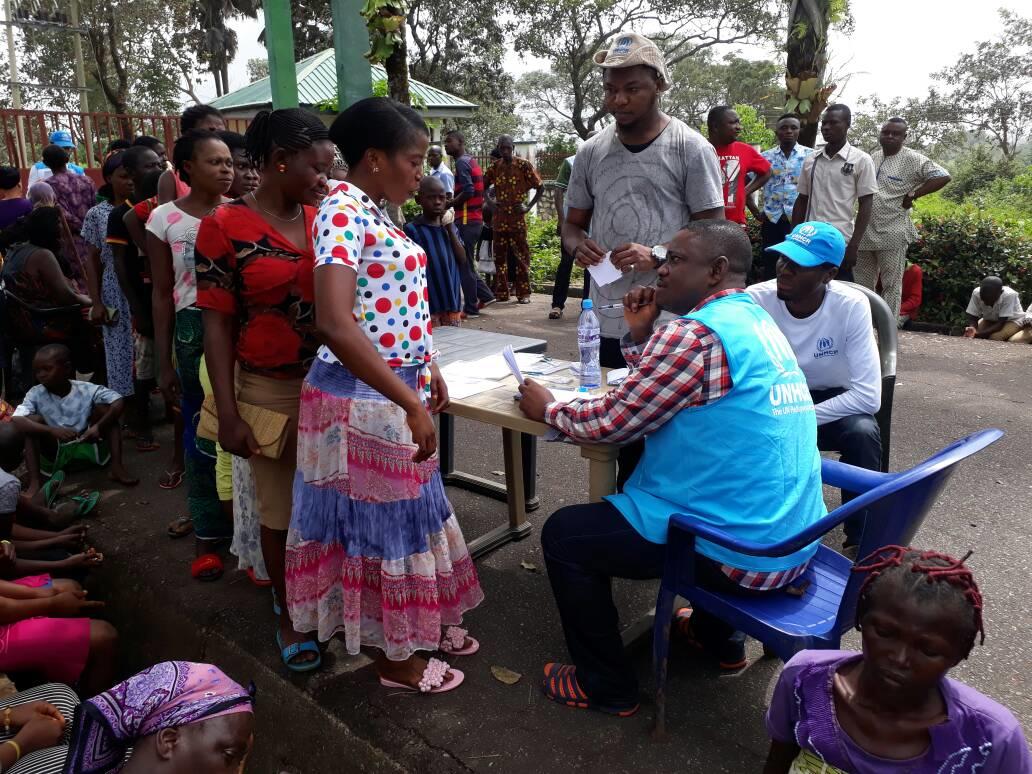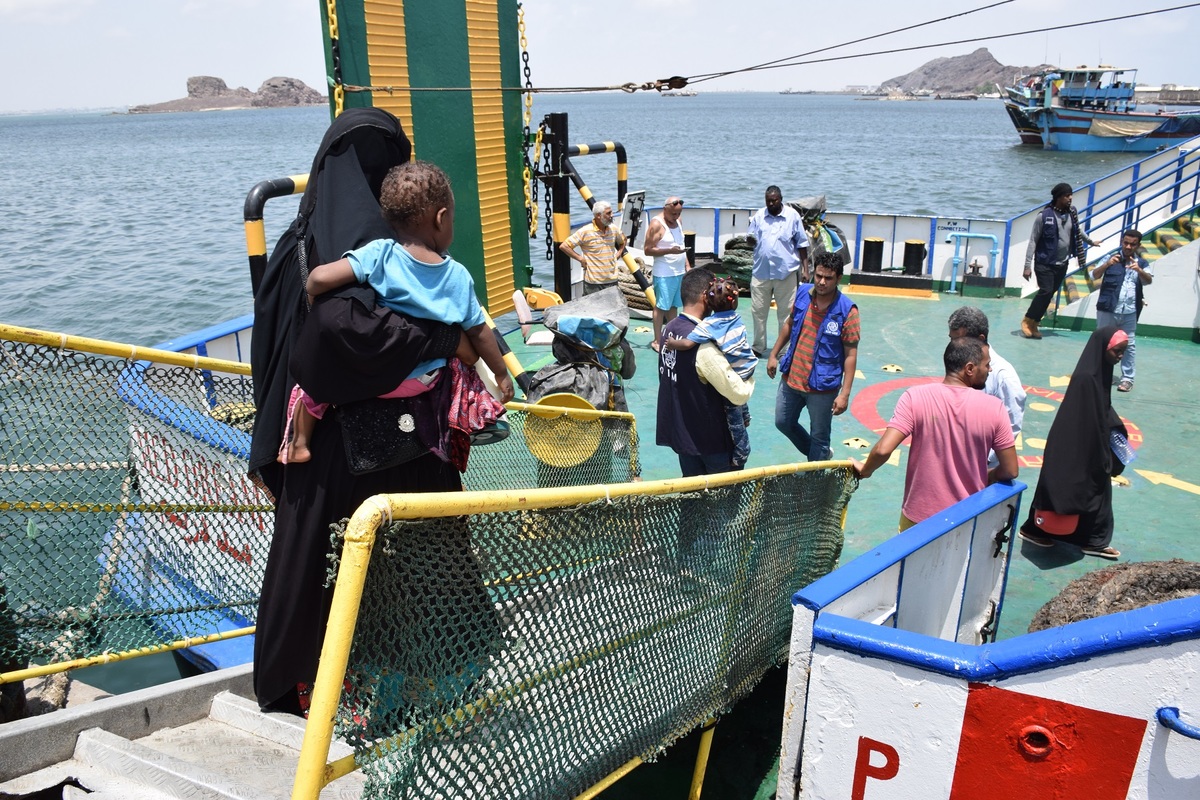Angolan refugees return home from DRC on a road rebuilt by UNHCR
Angolan refugees return home from DRC on a road rebuilt by UNHCR

CAMAXILO, Angola, October 12 (UNHCR) - Six years ago Macumba Massoge fled on foot across the border between Angola and the Democratic Republic of the Congo (DRC) with her son, four daughters and their small children. Now she is back home, one of 273 Angolans to arrive in the first convoy that the UN refugee agency has been able to organise along the re-opened road.
"The war was too much, we had to flee," says Massoge, sitting at Camaxilo's newly built Reception Centre in the UNHCR truck that brought her back in the first organised repatriation last week to the diamond-rich province of Lunda Norte in north-eastern Angola.
Massoge had fled Lunda Norte, controlled by the former rebel group UNITA, and walked the 120 km from Camaxilo to the DRC. For six years she lived in a settlement in Kahemba, in the south-west of the DRC, where refugees receive UNHCR assistance.
Organised repatriation to Angola began in 2003 and is due to finish at the end of this year, but this will be reviewed late December to see if an extension is necessary for logistical reasons.
For Massoge, the route back home was especially difficult, as any return had previously been blocked. To establish a repatriation corridor to Lunda Norte, the road from Camaxilo to the border had to be cleared of mines and rehabilitated by organisations working with the financial support of UNHCR.
Between June and October, the road was de-mined - a painstaking process that costs an average of two U.S. dollars per square metre - and six steel bridges were put in place. In addition, roads that will be used to take returnees onward to their original homes and to bring supplies to Camaxilo had to be cleared of mines before the operation could begin.
Each week from now until the end of the year, a convoy of returnees will arrive in Camaxilo from the DRC. Over half of the 6,000 returnees expected to return to Lunda Norte with UNHCR's assistance, are going to settle in and around the town
"We had a very tight timeframe," said Martin Zirn, Senior Technical Coordinator for UNHCR Angola, supervising the completion of the Reception Centre on the morning that the first convoy was to arrive. "De-mining began in June 2005, and we were working against the clock to conclude it in less than five months."
The Angolan government official in charge of the site where returnees spend their first three days, Kapata Joaquim Mussumadi, is also a returnee. He ensures those arriving are able to rest, get registered and receive food, non-food items and construction kits. They attend awareness sessions on HIV/AIDS, the danger of mines and on sexual and gender-based violence before heading home.
Mussumadi, the coordinator for the Ministry of Social Affairs and of Reintegration in Camaxilo, had walked that same road to DRC, fleeing during the night with his family. He returned in 1999 on his own.
"I received a message that everything was calm here. Eight months after, battles broke out again around here and the war became so intense that I had to flee again," said Mussumadi.
That time he escaped to Kafonfo, inside Lunda Norte, and sought refuge in a government regiment's base. He proudly told of arriving in Camaxilo with the Angolan Army to reoccupy the province after the death of UNITA's leader, Jonas Savimbi, in 2002, that preceded the end of the conflict.
As the government official rushed to make the final preparations for the reception of Massonge and the other 272 returnees in the UNHCR convoy, he recalled happier memories of Camaxilo in his childhood six decades ago.
"There were lots of shops selling cloths and fine things," remembered Mussumadi. It was the only town in the province where trade in goods other than diamonds was allowed during the Portuguese colonial era.
The decline started with the forced recruitment of Camaxilo's men by the Portuguese to labour in the diamond mines. The 27 years of civil war and the waves of refugees it produced transformed the thriving Camaxilo of the past into a small and poor village.
But signs of recovery have already appeared. The provincial government says that next year it will restore the colonial water system, which needs only a pumping station to become functional. Provincial authorities are also promising to bring electricity to the capitals of Lunda Norte's municipalities, such as Camaxilo.
Pigs, chickens and goats can now be seen roaming close to Camaxilo's adobe houses in a country where most domesticated animals had either been killed for food or stepped on mines.
Beside six trucks with returnees and three with luggage, a tenth truck in the first convoy brought chickens, goats and a cow belonging to Massoge. Her second cow had died just before the trip but her fears that the other would be stolen proved unfounded.
"I suffered a lot and I am old, but I am going to dance and I am going to sing tonight. I am very happy to be back."
By Maria Benevides in Luanda, Angola







